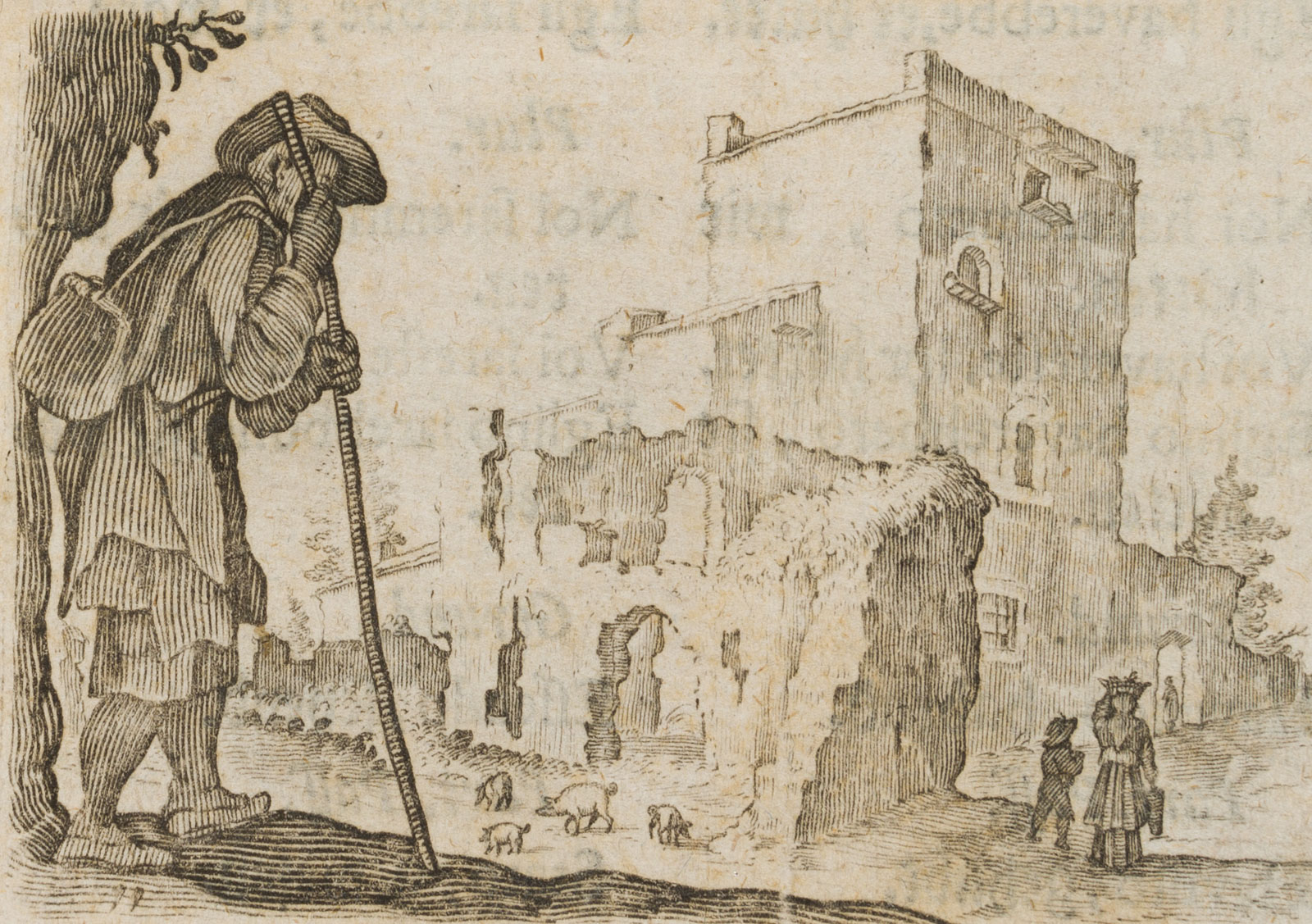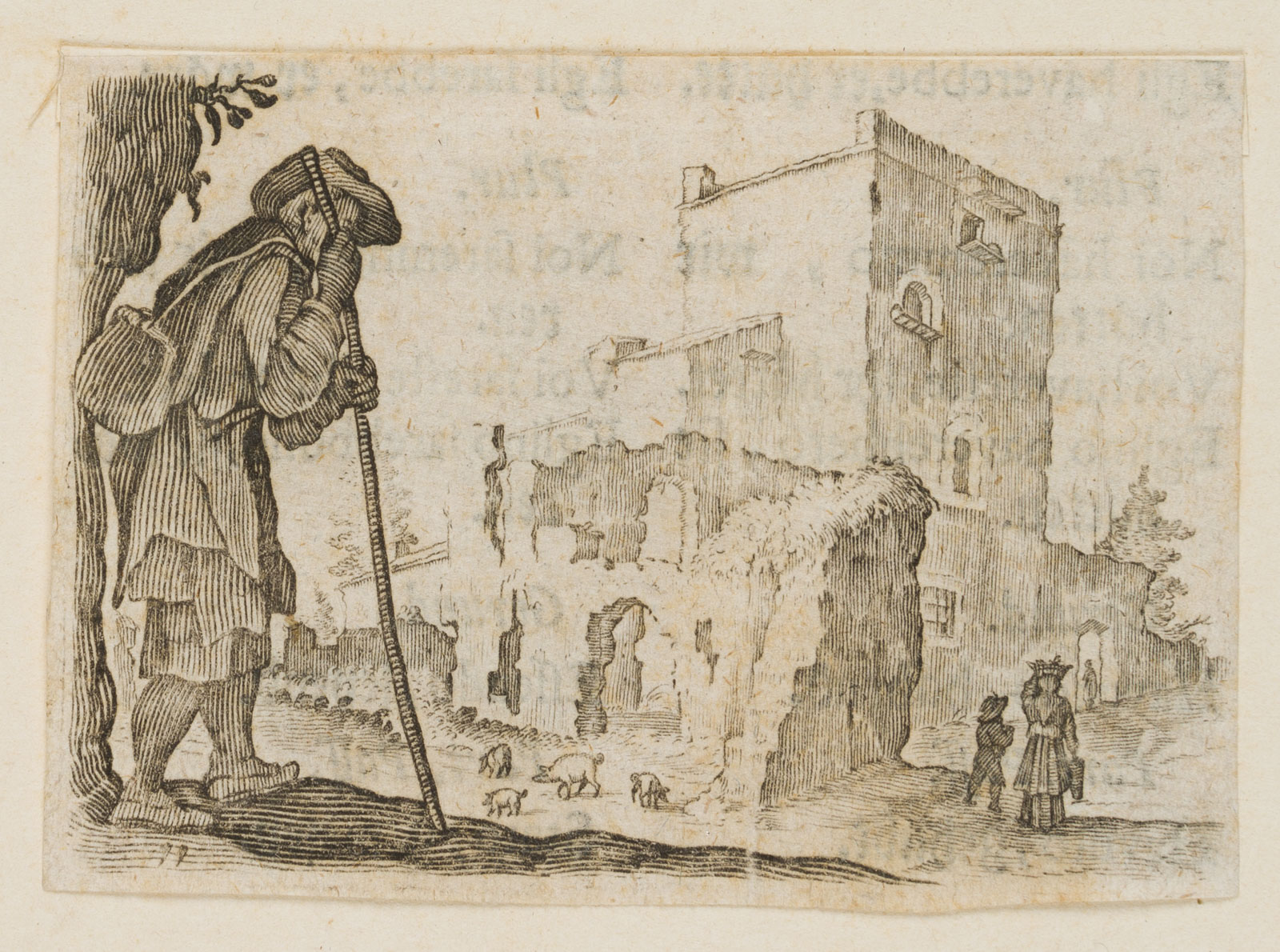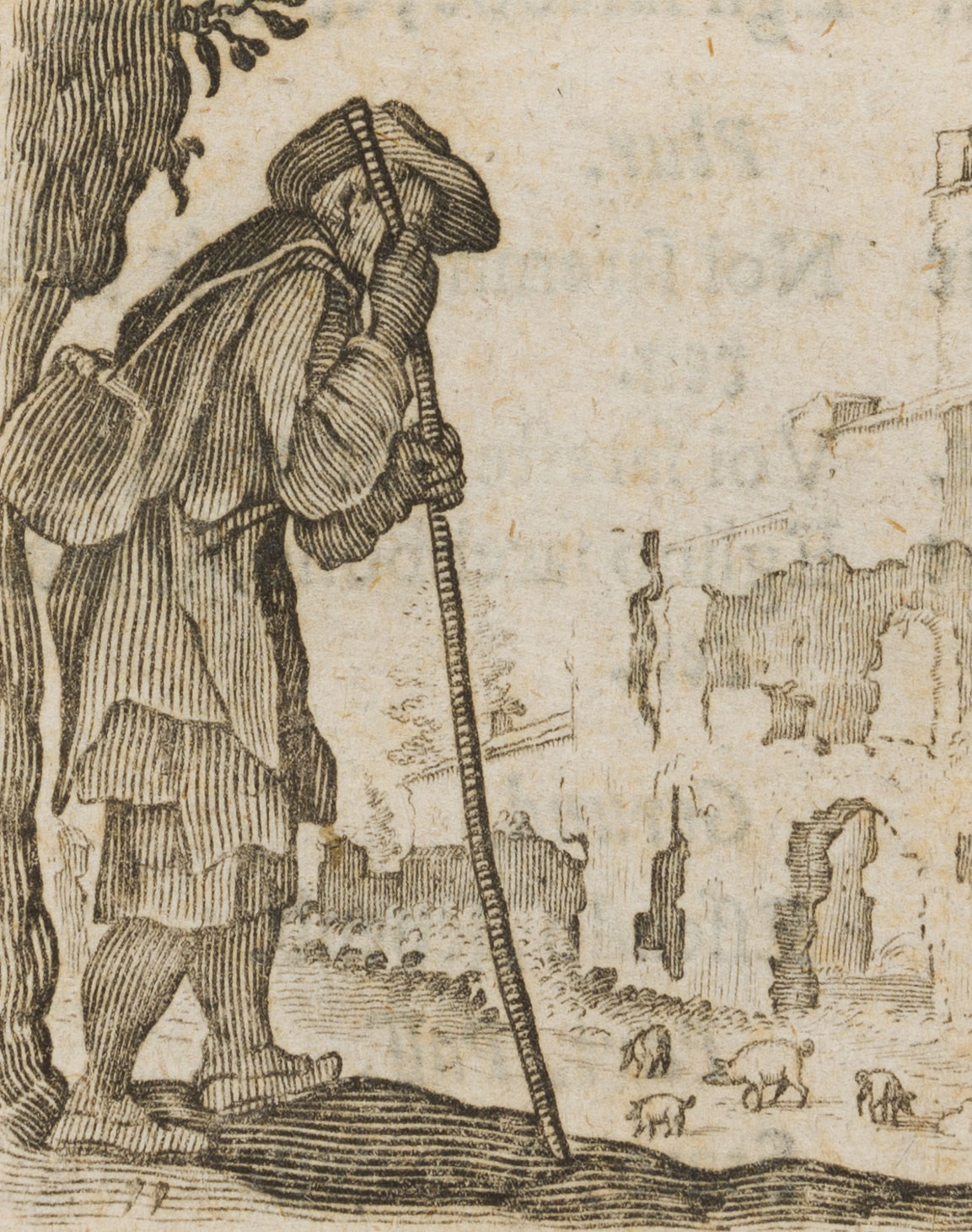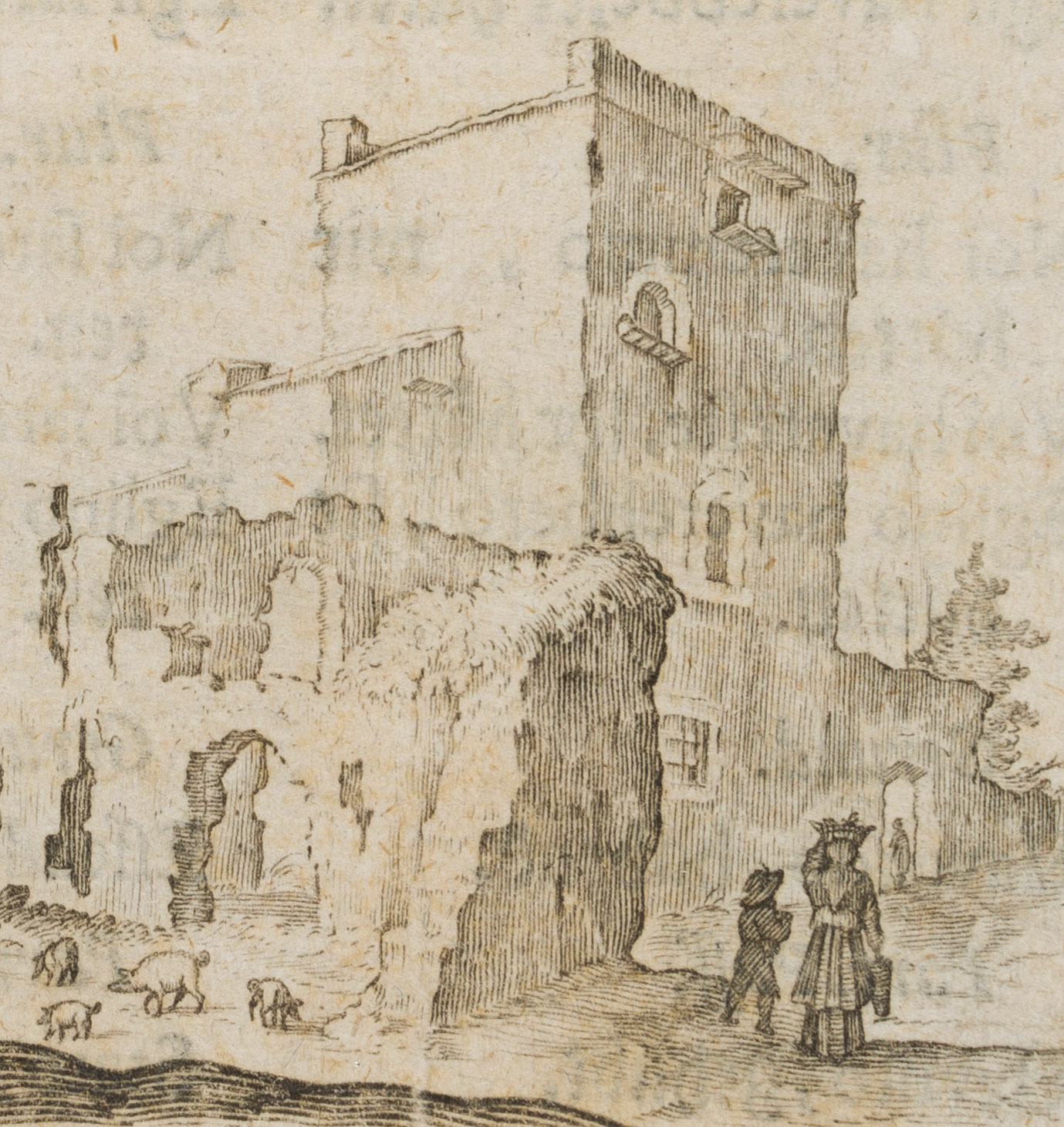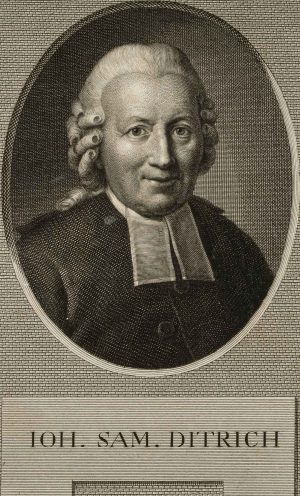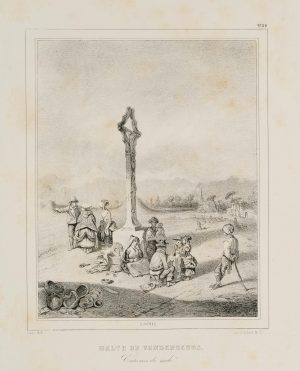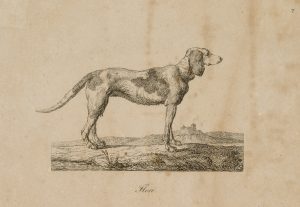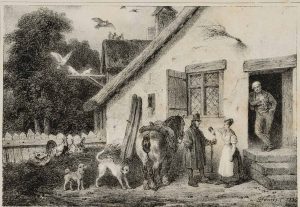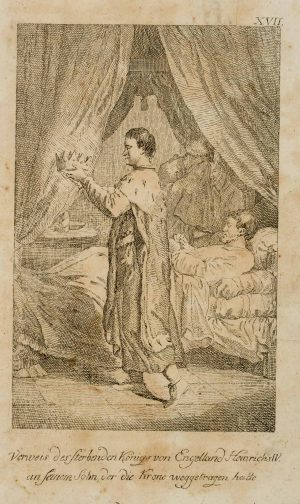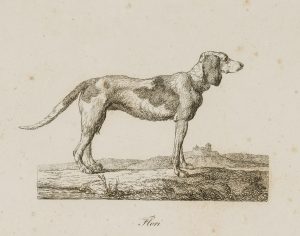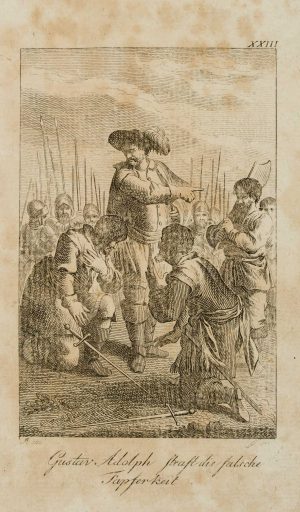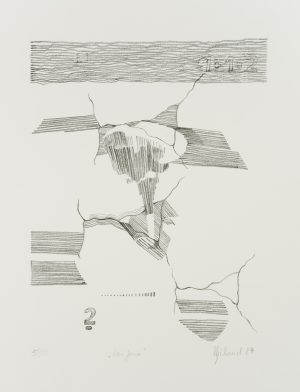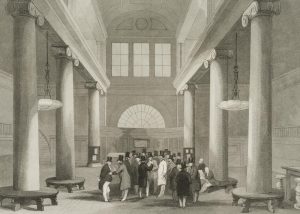Jacques Callot (1592 Nancy – 1635 ebd.), “Ein Hirte vor Ruinen”, Folge: Die Capricci, c. 1622, um 1622, Radierung
- Technik: Radierung auf Büttenpapier
- Datierung: um 1622
- Beschreibung: Seitenverkehrt nach einer Radierung aus Callots Folge der Capricci, vgl. Lieure 218/432. Literatur: J. Lieure: Jacques Callot. La Vie artistique. Catalogue de son oeuvre gravé. Paris 1924 ff.
Auf den kleinformatigen Blättern der Capricci hat Callot noch einmal ganz Florenz eingefasst. Die Atmosphäre, die bäuerliche Idylle und die Welt der Commedia dell’arte. Sie gehören zu Callots Meisterradierungen und wurden ein großer Erfolg. Hier hat er das erste Mal konsequent seine neue Radiermethode – die Verwendung von hartem Firnis und der “échoppe” – durchgeführt.
Jacques Callot gilt als der bedeutendste Graphiker des Manierismus. Zu seiner berühmtesten Illustrationsfolge zählen die “Les Misères et les malheurs de la guerre.” – im deutschen Sprachraum meist: “Die großen Schrecken des Krieges”. Im Jahr 1621 aus dem Dienste der Medici nach Nancy zurückgekehrt, diente ihm die Belagerung der Stadt durch die Truppen von Louis XIII. als wesentliche Motivquelle für diese Radierungen. “Es ging ihm nicht nur um die Sensation, die Hängen, Rädern, Foltern dem Kriegsberichterstatter als effektvolle Themen lieferten. Er zeigte auch das Unglück am Rande” (Schröder). - Schlagworte: Tiere, Natur, Frankreich, Barock, 1600-1649
- Größe: 5,6 cm x 8,0 cm
- Zustand: Guter Zustand. Das Blatt ist altersbedingt stockfleckig und leicht berieben, an den Rändern knapp beschnitten; an der Oberkante auf eine Unterlage gelegt.
English Version:
Jacques Callot (1592 Nancy – 1635 ibid.), “A Shepherd before Ruins”, set: The Capricci, c 1622, c. 1622, Etching
- Technique: Etching on
- Date: c. 1622
- Description: Laterally reversed after an etching from Callot’s series of Capricci, cf. Lieure 218/432. Literature: J. Lieure: Jacques Callot. La Vie artistique. Catalogue de son oeuvre grav. Paris 1924 ff.
In the small-format sheets of the Capricci Callot once again captured the whole of Florence. The atmosphere, the peasant idyll and the world of the commedia dell’arte. They belong to Callot’s master etchings and became a great success. Here he consistently carried out his new etching method – the use of hard varnish and the “choppe” – for the first time.
Jacques Callot is considered the most important graphic artist of Mannerism. Among his most famous series of illustrations are “Les Misres et les malheurs de la guerre.” – in German usually: “Die großen Schrecken des Krieges” (The great horrors of war). Returning to Nancy in 1621 from the service of the Medici, the siege of the city by the troops of Louis XIII served him as a major source of motifs for these etchings. “He was not only concerned with the sensation that hanging, wheeling, torture provided the war correspondent as effective subjects. He also showed the misfortune on the sidelines” (Schröder). - Size: 5,6 cm x 8,0 cm (2,2 x 3,1 in)
- Condition: Good condition. The sheet is foxed and slightly rubbed due to its age, just trimmed at the margins; laid on a backing at the upper edge.

